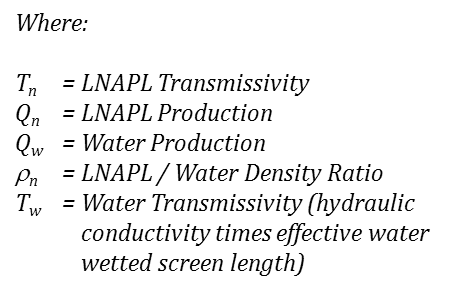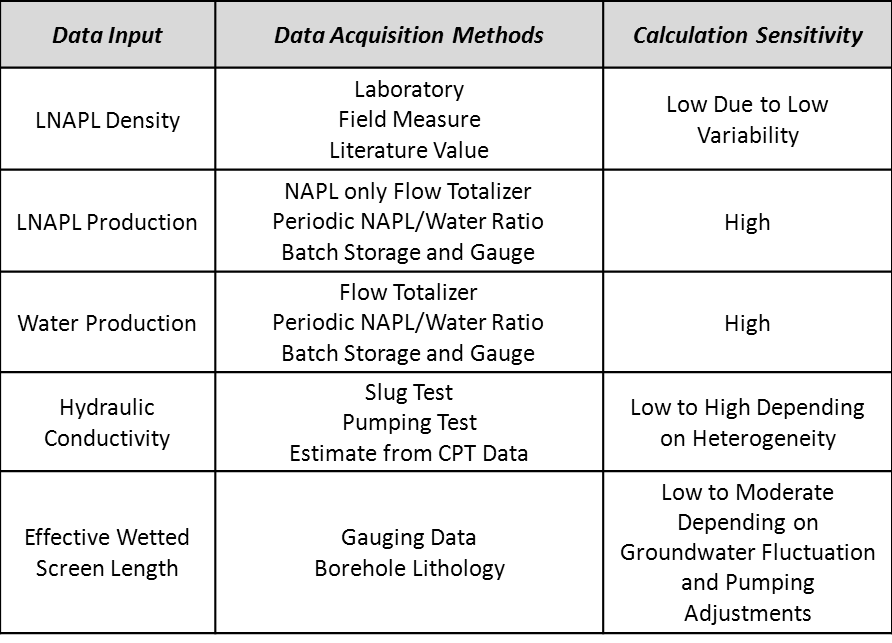Applied NAPL Science Review
Demystifying NAPL Science for the Remediation Manager
Editor: J. Michael Hawthorne, PG
Asst. Editor: Dr. Rangaramanujam Muthu
ANSR Scientific Review Board
J. Michael Hawthorne, PG, Board of Chairman, GEI Consultants Inc.
Mark Adamski, PG, BP Americas
Stephen S. Boynton, PE, LSP, Subsurface Env. Solutions, LLC
Dr. Randall Charbeneau, University of Texas
Paul Cho, PG, California Regional Water Quality Control Board-LA
Dr. Sanjay Garg, Shell Global Solutions (US) Inc.
Dr. Terrence Johnson, USEPA
Andrew J. Kirkman, PE, BP Americas
Mark Lyverse, PG, Chevron Energy Technology Company
Mark W. Malander, ExxonMobil Environmental Services
Applied NAPL Science Review (ANSR) is a scientific ejournal that provides insight into the science behind the characterization and remediation of Non-Aqueous Phase Liquids (NAPLs) using plain English. We welcome feedback, suggestions for future topics, questions, and recommended links to NAPL resources. All submittals should be sent to the editor.
LNAPL Transmissivity from Total Fluids Recovery Data
Part 1: Calculation Methodology
LNAPL transmissivity is an excellent metric to measure the hydraulic recoverability of light non-aqueous phase liquid (LNAPL), just as groundwater transmissivity is used to measure the hydraulic recoverability of groundwater. A brief introduction to LNAPL transmissivity was provided in the July 2011 issue of Applied NAPL Science Review (ANSR) (Volume 1, Issue 7) titled LNAPL Transmissivity.
ASTM International, Inc. (ASTM 2011) published guidance for the calculation of LNAPL transmissivity using four general methods (shown in the following figure). This article is the first in a two part series briefly introducing the estimation of LNAPL transmissivity from total fluids recovery data, which is defined as hydraulic removal of LNAPL and groundwater via pumping either with single or dual pumping systems. Part 1 discusses the calculation method and part 2 will discuss application and interpretation of results.

Outline of LNAPL transmissivity estimation methods described in ASTM (2011). Some overlap between methods exists. For example, “manual skimming testing” and “LNAPL skimming” are based on the same equations, but “manual skimming testing” is focused towards short-term LNAPL transmissivity testing by skimming LNAPL using manual methods while “LNAPL skimming” is focused more towards long-term automated skimming of LNAPL by a remediation system. For more details see ASTM (2011) and Charbeneau (2007).
Total fluids recovery removes LNAPL mass, thereby reducing LNAPL saturation over time. This is reflected in decreasing LNAPL/water ratios over time, which in turn results in decreased LNAPL transmissivities. Long-term, non-cyclical groundwater fluctuations (e.g., drought) and heterogeneity may induce some fluctuations in the LNAPL transmissivity estimates, but will typically have minimal effect on the overall trend.
Most commonly this method is used to analyze long-term remediation data from an active total fluids recovery system, and LNAPL transmissivity values will typically be calculated on either a monthly or annual basis over time. One relatively new approach still under development is the application of total fluids recovery for short periods of time (e.g., one hour) as an alternative to baildown or manual skimming testing. This approach is referred to as a ratio test.
Calculation: The following equation (Charbeneau, 2007) may be used to calculate LNAPL transmissivity from total fluids recovery data regardless of whether you are evaluating short-term ratio test data or long-term recovery system data. In both cases the objective is to reach, or at least approach, steady-state LNAPL flow conditions into the well.


The equation is relatively simple, and primarily varies with the relative ratio of LNAPL to groundwater. Practically it doesn’t matter what units are used for the LNAPL and groundwater recovery data as long as they are consistent (the ratio will be the same regardless of the units). However, the units for hydraulic conductivity and wetted screen length must be consistent with the desired units for LNAPL transmissivity. One common approach is to use LNAPL and groundwater recovery in gallons per year, hydraulic conductivity in feet per day, and wetted screen length in feet. This then yields LNAPL transmissivity in feet squared per day.

Data Requirements: In order to calculate LNAPL transmissivity from total fluids recovery data, the amount of groundwater and LNAPL produced over time must be measured accurately. The more accurate the measured LNAPL to water ratios are, the more accurate the calculated LNAPL transmissivity values will be. In addition to the ratios, the density of the LNAPL and the water transmissivity across the well screen (i.e., product of the hydraulic conductivity and effective water wetted screen length) are needed.
Significant error may creep in to the calculated LNAPL transmissivity values from errors in these inputs if the LNAPL conceptual site model (LCSM) is not clearly understood. The accuracy of the produced LNAPL volume, hydraulic conductivity, and effective wetted screen length are particularly important, especially in highly heterogeneous, confined, or perched hydrogeologic settings.

Table of equation input parameters, selected data collection methods, and calculation sensitivity to each parameter.
Caution: Although this method appears simple, failure to incorporate the considerations described may result in substantial error, particularly if the LCSM is not clearly understood. The simple equation presented assumes water drawdown is substantially greater than LNAPL drawdown. If not, an alternative equation is available (see ASTM 2011 and Charbeneau 2007 for more detail). As always, the values obtained from these calculations must be evaluated in terms of their scale in time and space and their overall meaning to a site. Application of this approach is recommended in conjunction with a strong understanding of the LCSM and the strengths and limitations of the calculations performed.
For Further Reading:
ASTM (2011) The Standard Guide for Estimation of LNAPL Transmissivity. Designation: E2856-11, ASTM International. 66 pp.
Charbeneau, Randall J. (2007) LNAPL Distribution and Recovery Model (LDRM), Volume 1: Distribution and Recovery of Petroleum Hydrocarbon Liquids in Porous Media. API Publication 4760, January 2007, American Petroleum Institute Regulatory and Scientific Affairs Department, 53 pp.
ITRC (2009), LNAPL Remediation Technologies, ITRC Publication LNAPL-2, Interstate Technology & Regulatory Council.
Sale, Tom (2001), Methods for Determining Inputs to Environmental Petroleum Hydrocarbon Mobility and Recovery Models, API Publication 4711, American Petroleum Institute.
Sale, Tom and Applegate, David (1997), Mobile NAPL Recovery: Conceptual, Field and Mathematical Considerations. Ground Water V. 35, No. 3, 418-426 pp.
Related Links
API LNAPL Resources
ASTM LCSM Guide
Env Canada Oil Properties DB
EPA NAPL Guidance
ITRC LNAPL Resources
ITRC LNAPL Training
ITRC DNAPL Documents
RTDF NAPL Training
RTDF NAPL Publications
USGS LNAPL Facts
ANSR Archives
Coming Up
Look for more articles on LNAPL transmissivity as well as additional explanations of laser induced fluorescence, natural source zone depletion and LNAPL Distribution and Recovery Modeling in coming newsletters.
Announcements
An updated version of the ASTM Guide for Calculating LNAPL Transmissivity is Now Available for Purchase at www.astm.org.
ASTM Standard E2856 – Standard guide for Estimation of LNAPL Transmissivity is now available
The ASTM LNAPL Conceptual Site Model (LCSM) workgroup is actively updating the ASTM LCSM guidance document. If you are interested in participating on this team or would like to send comments for consideration – please contact Andrew Kirkman of BP Americas (team leader).
ANSR now has a companion group on LinkedIn that is open to all and is intended to provide a forum for the exchange of questions and information about NAPL science. You are all invited to join by clicking here OR search for “ANSR – Applied NAPL Science Review” on LinkedIn. If you have a question or want to share information on applied NAPL science, then the ANSR LinkedIn group is an excellent forum to reach out to others internationally.
